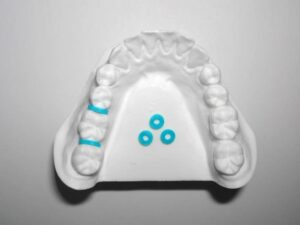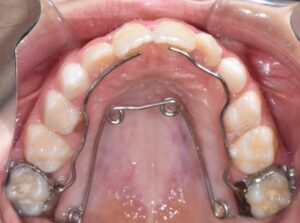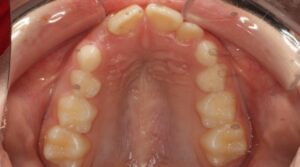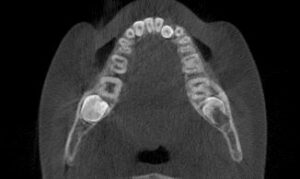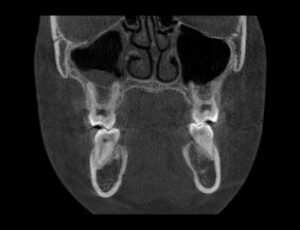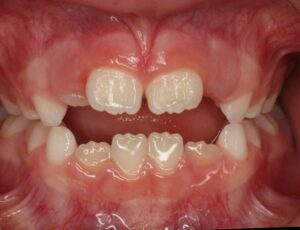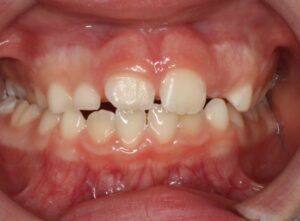What it's like to get an upper jaw expander
March 5th, 2020
What it’s like to get an upper jaw expander
Joey needed an upper jaw expander to correct his crowding but he was afraid it would hurt and he wouldn’t be able to eat.
Becky, a team member at the office of Dr. Michael Sebastian could tell Joey was nervous so she made a point of explaining about the expander to help Joey understand what was going on, because you’re usually scared of the unknown.
The first step was to place separators between his back upper teeth (these are small round elastic pieces). She showed them to Joey and explained they would feel like having those teeth flossed when they are placed.
Separators
The separators would stay in until the next week. Becky took Joey’s arm and pressed on it, she asked Joey, “Does this hurt, or does it feel like pressure?” Joey said “it feels like pressure.” Becky assured Joey that the separators would feel like that. She also gave Joey some grape Advil to reduce any possible soreness which might develop.
What a relief! It wasn’t hard at all. Joey could eat whatever he wanted except sticky candy. At Becky’s direction, Joey’s mom would give him some Advil 30 minutes before the next appointment.
Next week, Joey came in to fit for the expander. Becky again was there to make sure Joey had a great experience. As before, she explained what was going to happen that day. They would first remove the separators which had opened a small space for the bands to easily slip on the teeth.
Bands
Like fitting a pair of new shoes, she would have to try on a couple of different bands to get the size perfect. Bands are rings which fit around the two upper six year molars and are attached to the expander. With a gentle touch and Joey’s help, they used a bite stick to push the bands into the correct position.
Bite Stick
With the right bands in position, a scan of Joey’s mouth was done. Becky showed Joey that the scanner is like a very small camera which takes thousands of pictures. You move it slowly around the mouth and on the video screen an exact copy of Joey’s teeth appeared. It only takes about 5 minutes. The orthodontic lab would use this scan and the bands to make Joey’s expander. This was so easy, Joey couldn’t believe how quick and painless it was.
Becky put new separators in so next week the expander could be placed on Thursday at 3:30 pm.
Joey left school for the big day. When he got to the office, Becky gave him Advil. Joey was nervous, it hadn’t hurt so far but he was sure it would today. Becky eased his fear by explaining that today would be just like the last appointment except the two bands they fit would be attached by the expander. They would go through the same process except a special glue would be used to hold the expander in place, nothing like any glue Joey had used before. It was a special glue made for using only in the mouth.
Dr. Sebastian, Becky and Joey worked together to put in the expander. It was just like fitting the bands at the last appointment except for the glue. Joey got to hold “Mr. Thirsty” to remove the flavor of the glue. It took 3 minutes for the glue to set then Becky removed the excess glue and Joey was done! Wow, all the worry and he was fine.
Mr. Thirsty
Becky gave Joey and his mom instructions on care and cleaning of the appliance. She also recommended that Joey take Advil every 4 to 6 hours for the next 24 hours as research has shown that this reduces any discomfort by up to 90%. Becky suggested Joey stay on a soft diet for 5 days until his tongue got used to moving food around the appliance.
Joey and his mom followed these instructions and his first 5 days were nothing like he imagined. He was sore but was able to do all his school work and after school activities. At his next appointment, Dr. Sebastian showed Joey and his mom the change which had occurred over this first 6 weeks, they couldn’t believe it, Joey knew the right thing was being done.



